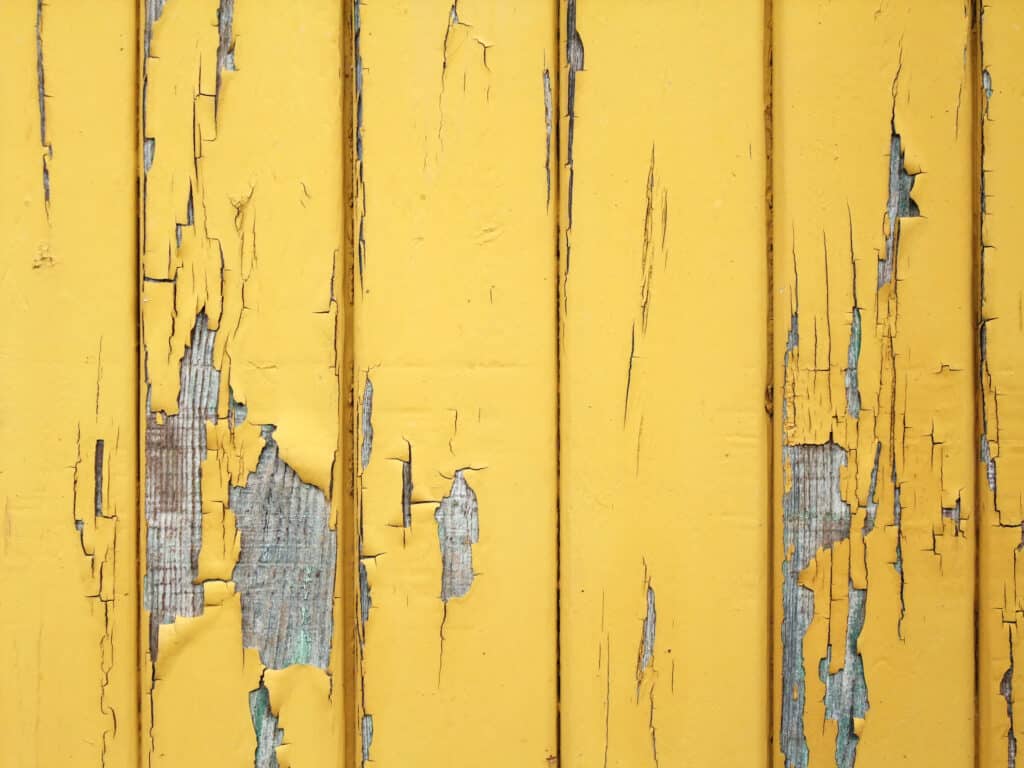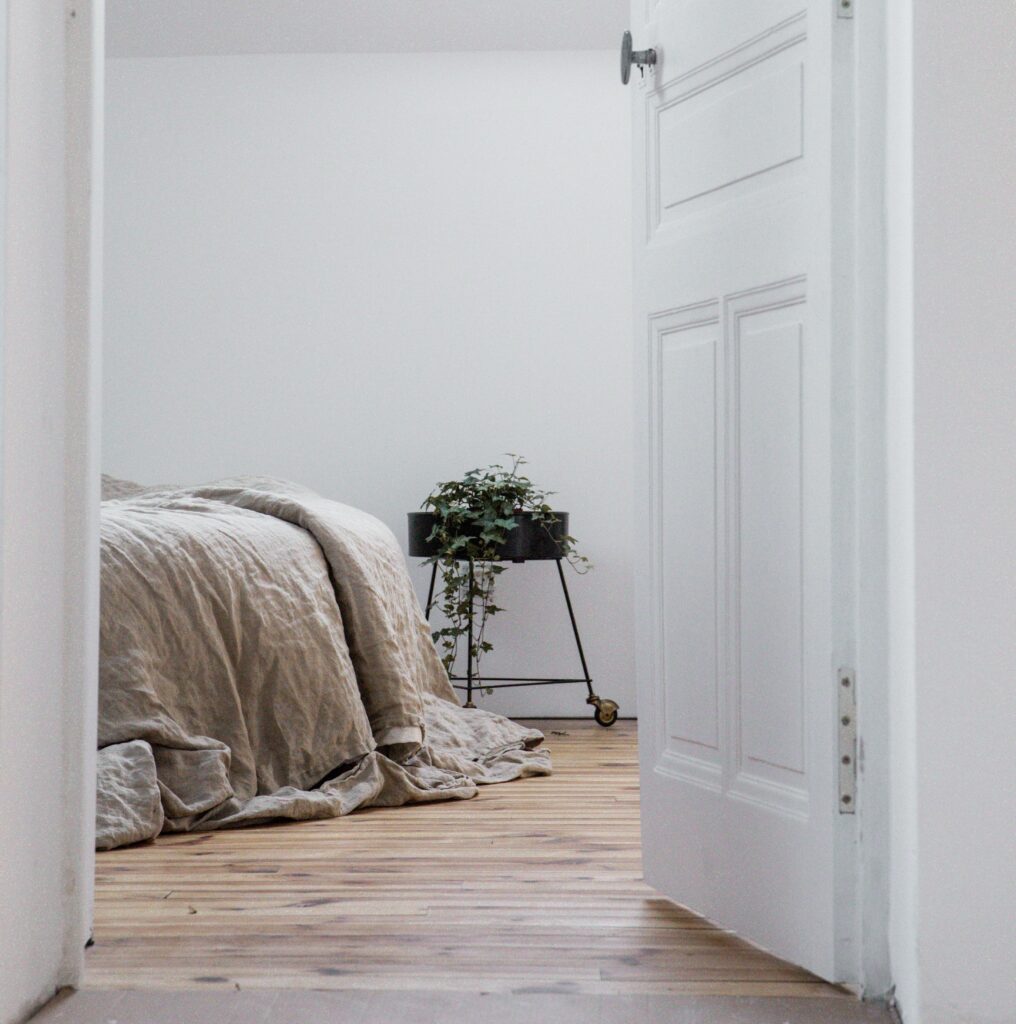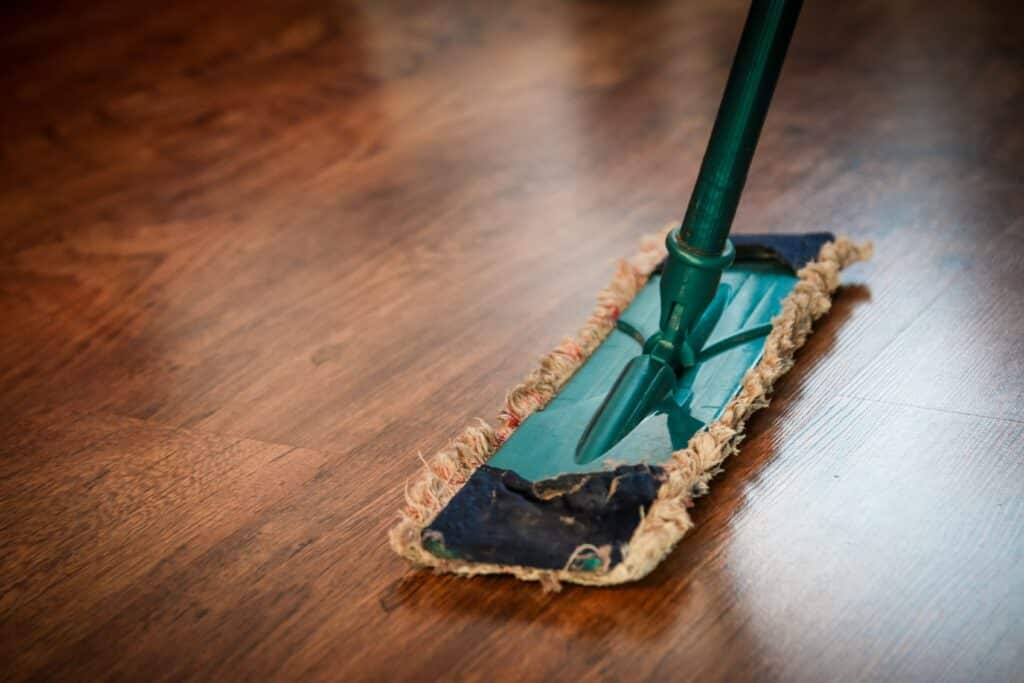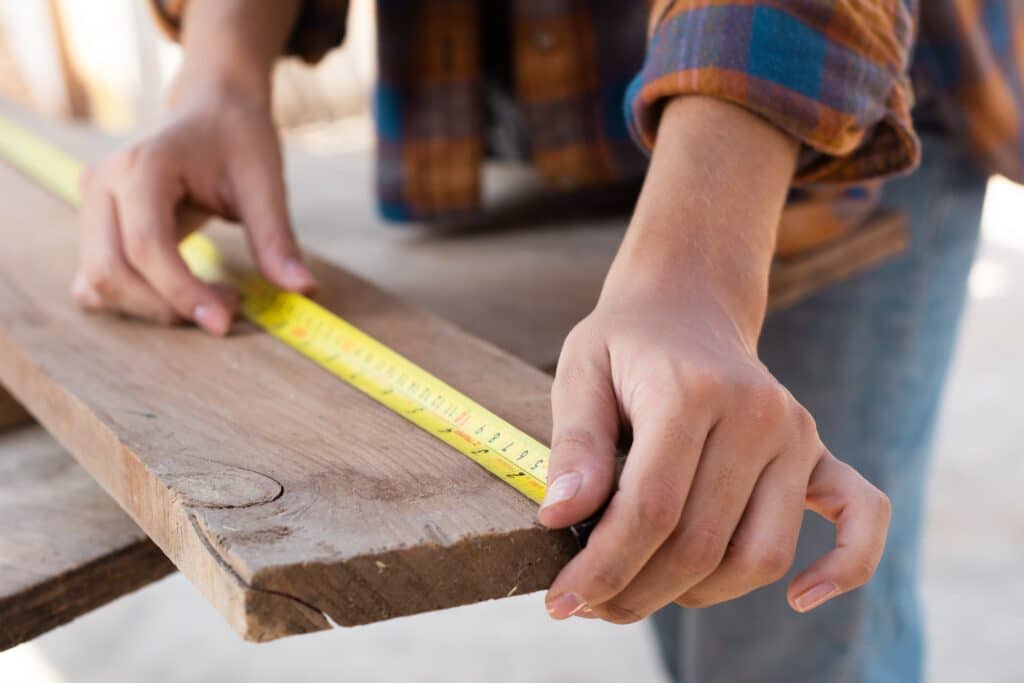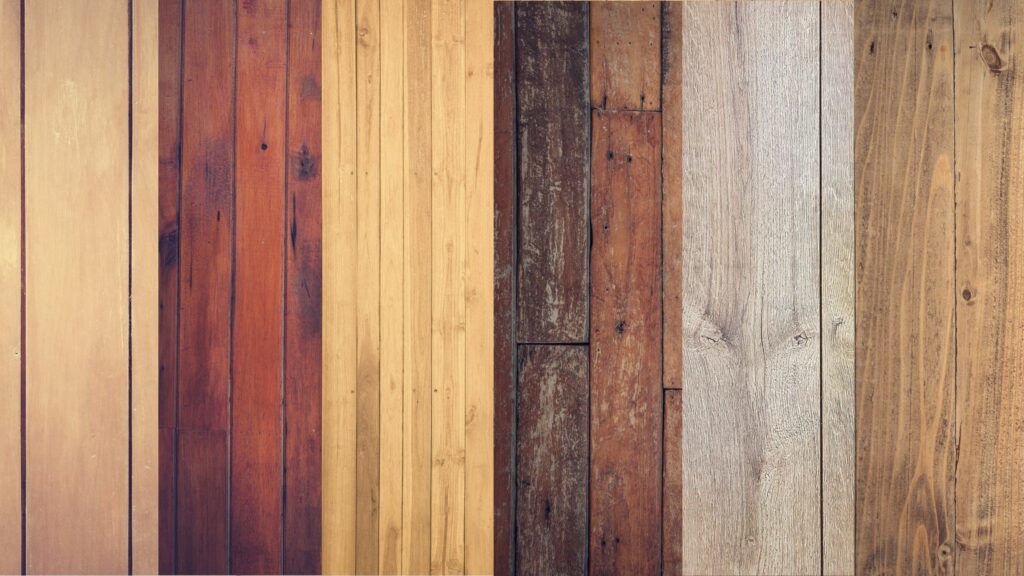
Hardwood floors are a classic and timeless choice that can fit in any type of home. A hardwood floor adds a sense of elegance while still being incredibly durable and long-lasting. There are multiple types of hardwood flooring. All types have their own style, advantages and disadvantages. It’s therefore important to keep these differences in mind before making your decision. Let’s go through the most popular types of hardwood floors.
Solid vs Engineered Hardwood Flooring
Solid Hardwood Flooring
Solid hardwood flooring is made from solid wooden pieces. These pieces are cut down to the desired thickness (usually 3/4”), then milled to create uniform planks. Hardwood floors can be finished in many different ways so that they can fit any decor scheme.
Additionally, most solid hardwood floors are made of thick planks that are dent, scratch and wear resistant. When properly maintained, solid hardwood floors can last for decades without losing their beauty or value.
Advantages of Solid Hardwood Flooring
The biggest advantage of solid hardwood floors is their durability—they can last for decades when properly cared for and maintained. They also add value and character to any home, making them sought after by both home buyers and renters alike.
In addition, this type of flooring provides excellent insulation against sound, making it the ideal choice for people who want sound-dampening floors in their homes. Solid hardwood floors come in a variety of colors, grains, and finishes, so you’re sure to find something that fits your design preferences perfectly.
Disadvantages of Solid Hardwood Flooring
While it has many advantages to have solid hardwood floors in your home, there are unfortunately some drawbacks as well. For starters, this type of flooring can be expensive—it tends to cost more than other types such as laminate or engineered wood floors due to its higher quality materials and construction methods used during installation.
Additionally, you need to be careful when cleaning solid hardwood floors as they are more prone to water damage. They also require occasional maintenance such as waxing or refinishing. After years of intensive use, they may even require sanding in order to keep them looking their best. This might take some time and effort. It is something that not all homeowners are willing to do themselves.
Finally, since these types of floors aren’t waterproof like laminate or vinyl planks are, they can easily be damaged by water spills if not cleaned up right away.
Engineered Hardwood Flooring
Engineered hardwood flooring is made up of multiple layers of plywood or other woods that are pressed together in a cross-grain pattern. This process makes it more stable than a solid wood floor as it prevents warping, cupping, or buckling from temperature or humidity level changes. The top layer is real wood so it looks like solid hardwood, it’s just made in a different way.
Advantages of Engineered Hardwood Flooring
There are many advantages to choosing an engineered hardwood floor over a solid one. It’s more resistant to moisture and heat which makes it better suited for basements, bathrooms, kitchens, etc. than non-engineered hardwood floors.
Generally, engineered hardwood flooring is less expensive than solid wood flooring since it’s made with less expensive materials such as plywood. It still looks like real wood though.
Furthermore, an engineered hardwood floor can be installed directly on concrete since the core layers absorb shocks better than a single piece of solid wood.
Disadvantages of Engineered Hardwood Flooring
One thing to bear in mind is that most of the engineered hardwood floors cannot be refinished. Some manufacturers claim that their product can withstand some refinishing, but remember that it will not be as easy to refinish as solid wood because there is only a thin hardwood top layer.
In addition, in the unlikely event that the core gets damaged, you would need to replace the entire plank instead of just sanding it down like you would with a solid plank. Lastly, some people prefer the feel of real wood under their feet. so If this is important to you, then engineered hardwood flooring may not be your best option.
Reclaimed Hardwood Flooring
Reclaimed hardwood flooring is made from wood taken from old buildings that have been salvaged and then reused for new purposes. Reclaimed wood has a unique character that comes from years of sun and rain exposure which gives each piece an interesting patina that modern woods just don’t have.
It also tends to be more affordable than other types of wood flooring due to the fact it’s recycled. The drawback is that reclaimed wood can be harder to find since there’s only so much available on the market at any given time.
Laminate vs Vinyl vs Parquet Flooring
Laminate Flooring
Laminate flooring is a synthetic product that has been designed to resemble natural wood or stone products. It consists of multiple layers that are fused together under high pressure and heat. The top layer is a clear protective coating that makes the material resistant to fading, staining, scratches and wear. The middle layer has a printed wood design to give the laminate its natural hardwood appearance. The bottom layer provides stability and structure to the laminate product.
Advantages of Laminate Flooring
One of the key benefits of laminate flooring is its affordability. It’s much more cost-effective than traditional hardwood floors, making it ideal for those who want to update their home on a budget.
Additionally, laminate floors are durable and can last up to 20 years when properly maintained. They’re also easy to install—most people can install them themselves without any professional help—and they require very little upkeep compared to other types of hardwood floors.
Disadvantages of Laminate Flooring
Although laminate flooring certainly has its advantages, there are also some drawbacks. For one thing, it’s not as durable as a traditional hardwood floor. It may need to be replaced sooner if it gets damaged or worn over time.
Additionally, laminate floors cannot be refinished like traditional hardwood floors—once they start showing signs of wear or damage, they must be replaced altogether. Some people think that laminate floors don’t have quite the same look or feel as traditional hardwood floors.
Bottom line: if you want an authentic wood look for your home, then traditional hardwood may be a better option for you.
Vinyl Flooring
Vinyl flooring is made of durable, synthetic materials that are able to withstand a great deal of wear and tear. It’s designed to give the look and feel of real wood or stone while being easier to maintain and install.
Vinyl floors are made up of several layers: a printed full-color design layer, an inner core containing recycled materials, a backing layer that absorbs sound, and a protective wear layer. It’s sold per roll or sheet and is available in many designs, from rustic planks to modern tiles which make this type of floor ideal for countless applications, ranging from residential to commercial settings.
Advantages of Vinyl Flooring
The biggest advantage of vinyl flooring is its affordability. It’s much more affordable than hardwood or tile, so this type of floor might be perfect if you’re on a tight budget.
Additionally, vinyl flooring is incredibly durable, it can last up to 20 years with proper care! It also requires very little maintenance, just sweep and mop regularly with a mild detergent and your floors will look pristine for years to come. Lastly, vinyl flooring comes in a variety of colors and styles, so you’re sure to find something that matches your decor perfectly!
Disadvantages of Vinyl Flooring
Vinyl flooring has a lot of benefits, but also some downsides as well. Installation can be difficult if you have to trim down a single, large piece for example. You can easily cut off too much ruining a perfectly fitting floor in the process. If not installed correctly, the seams between tiles can come apart over time too.
Secondly, vinyl is not as environmentally friendly compared to other materials that resemble hardwood flooring such as cork or bamboo. PVC production emits toxic chemicals into the atmosphere which can be damaging to the environment.
Lastly, the color of your vinyl floors could fade over time due to exposure to UV light; this means that you may have to replace them sooner than other types of hardwood floors.
Parquet Flooring
Parquet flooring is made up of small, geometric pieces of hardwood that are arranged in intricate patterns like herringbone or chevron. It was first used in 17th century France for royal residences. Over time, the art of parquet flooring became popular throughout Europe and was eventually introduced in the US. Today, it remains a popular choice for many homeowners due to its charm and versatility.
Parquet flooring is typically made from classic hardwoods like oak, walnut, cherry, mahogany, or maple wood. Its unique design makes it stand out as an elegant yet functional option for any type or style of room.
Apart from the type of parquet that consists of individual pieces of wood that have to be manually layed out in intricate patterns, there’s also a more affordable variant: pre-made parquet tiles. These tiles are constructed like engineered hardwood, with a thin layer of genuine hardwood parquet on top.
Advantages Of Parquet Flooring
When it comes to hardwood floors, nothing quite beats the elegance of parquet. Available in many different patterns, even your own bespoke design, parquet gives more creative freedom than its hardwood plank counterparts.
Additionally, parquet floors are durable and can last for decades with proper care and maintenance.
Surprisingly, the highly decorative parquet tile variant is considerably more affordable than other types of hardwood floors because it is less labor intensive to install.
Disadvantages Of Parquet Flooring
The primary disadvantage associated with parquet floors is their susceptibility to water damage, especially in areas prone to moisture such as bathrooms or kitchens where water spills can occur.
In addition, some people may find parquet flooring difficult to clean because of the seams between the individual parquet pieces. Because of its intricate layout, parquet requires special attention during regular cleaning too.
Also, depending on the intricacy of the pattern, parquet can get really expensive because all those tiny pieces of wood need to be installed in a perfect pattern by a skilled craftsman.
Finished vs Unfinished Hardwood Flooring
Finished Hardwood Flooring
Finished hardwood flooring is made out of wood that has already been sealed and stained before it’s installed. This makes installation much quicker and easier, because it doesn’t need to be sanded or stained after installation. The floor is immediately ready to use, because you don’t have to wait for it to dry. However, with finished hardwood flooring, you are limited in terms of customization options since the color has already been applied.
Unfinished Hardwood Flooring
Unfinished hardwood flooring is made of wood that has not been sealed or stained before installation. This allows more control over the final look of your floor because you can sand and stain it any way you like after it has been installed. The downside is that installation takes longer because of all the extra steps involved. You have to wait for the wood to dry after staining before you can use it too.
Hardwood Species
Janka Scale
The Janka hardness test was developed in 1906 by Gabriel Janka and measures the hardness or resistance to denting of any piece of wood. The test measures the force required to press a steel ball halfway into a piece of wood. The result is measured in pounds-force (lbf) allowing the hardness of wood to be compared on what is known as the Janka scale. The higher the number on this scale, the harder and more resistant to denting that particular species of wood is.
This Janka Scale can help you choose a floor that will resist scratches, dents and other daily use and abuse best. A high rating on the Janka scale means great resistance to denting and scratching, while a low rating means less resistance.
Oak
Oak is one of the most popular hardwoods used in flooring because it’s durable and relatively affordable. Oak is available in both red (1290 Janka rating) and white (1360 Janka rating) varieties, with white oak being denser than red oak. It also comes in a variety of finishes including natural, stained, or oiled for added protection against water damage. The main advantage of oak is its durability. However, it may require occasional maintenance such as polishing or refinishing.
Ash
Ash is another popular hardwood because it’s slightly less expensive than oak but it still offers good durability with a 1320 score on the Janka scale. This species of hardwood is usually light in color with tones ranging from light brown to grayish-brown. It has an even grain pattern that makes it easy to work with for staining or finishing applications. Ash also holds up well against scratches and dents due to its tight grain pattern but it does require occasional maintenance just like other hardwoods.
Walnut
Walnut wood (1010 Janka rating) is one of the softer hardwood floors. It has become increasingly popular in recent years due to its dark color that adds character to any room. This type of wood is more expensive than oak or ash but it looks amazing with its unique grain patterns that become more visible with age. Walnut also adds warmth and sophistication without being too overpowering. This makes walnut flooring the perfect choice for modern homes that require an elegant touch.
Cherry
Cherry wood (995 Janka rating) is known for its distinctive grain pattern which can range from light red to deep brownish-red in color. These rich colors give any room an inviting ambiance, making it a very popular choice for homeowners. While softer than oak or ash, cherry wood it is still highly durable and resistant to scratches, dents, or other signs of daily wear and tear. This makes it an ideal choice for busy households with children or pets.
Maple
Maple wood (1450 Janka rating) is another great choice if you’re looking for a durable hardwood option that will last for decades if properly cared for. This species of hardwood has a smooth texture that can range from creamy white all the way to deep reddish brown depending on the type you choose. You can match almost any decor style you might have in mind. Additionally, maple resists denting better than other types of wood so you don’t have to worry about furniture damaging your floors over time.
Hickory
Hickory has grown significantly in popularity over the past few years. Its unique grain makes for interesting patterns on your floors no matter which finish you choose (e.g. natural, stained, etc.).
Additionally, with an 1820 score on the Janka scale, hickory is very resistant to scratches and dents due to its high density. This makes hickory a perfect choice for those who are looking for something more durable than traditional hardwoods like oak or ash but still want something visually appealing as well.
Mahogany
Mahogany is often overlooked, but this exotic wood has a unique look with its deep reddish-brown color. It adds warmth and character without being too overpowering like some darker woods like walnut for example.
Additionally, mahogany can last up to 40 years with proper care so you don’t have to worry about replacing your floors anytime soon! Make sure to look at the different species of mahogany because their durability can vary a lot. You have the softer mahoganies like Honduran mahogany (800 Janka rating) all the way up to Santos mahogany (2200 Janka rating), Red Mahogany (2697 Janka rating) and Brazilian Tiger mahogany which has a 3840 score on the Janka scale, which is incredibly tough.
Teak
Teak (2330 Janka rating) is another exotic wood option that adds warmth and luxury without breaking the bank as much as other options like walnut or mahogany would.
Teak has natural oils within its fibers which make it more resistant against water damage. It is visually appealing thanks to its warm golden-brown coloration similar to other types of tropical woods like ipe or cedar decking.
Pine
Pine isn’t quite as popular as it used to be a few centuries ago. This is mainly because, depending on the type of pine, it doesn’t withstand scratches and dents as well compared to other types of wood like oak or hickory. However, many people still love pine for its coziness. This soft yellow-toned wood ranges from 380 on the Janka scale for the Eastern White Pine all the way up to 1630 on the Janka scale for the Red Pine.
Cork
Cork isn’t technically considered “hardwood” since it’s made from tree bark rather than actual core wood fibers. However, cork flooring provides excellent insulation and offers plenty of visual appeal. This is mainly because cork’s cellular structure allows for all sorts of interesting shapes/patterns depending on how you mix different colors together.
Bamboo
Bamboo flooring , technically a large grass species instead of wood, offers similar benefits found in cork. It resembles traditional hardwoods thanks to bamboo’s unique cell structure. It changes colors when exposed to light – making bamboo very versatile if you’re trying to create something truly unique within your personal living spaces. Natural Bamboo (1380 Janka rating) is as durable as oak and maple, while Strand Woven Bamboo (3000 Janka rating) is one of the toughest types of hardwood flooring you can find.
No matter what type of hardwood floor you pick, you can rest assured knowing that you’ve made a timeless choice for your home. All types of hardwood floors offer their own unique benefits depending on what kind of lifestyle or aesthetic you’re going for. Some are extra durable for busy households, some are more resistant to moisture for kitchen or bathroom use, or offer a unique character. There’s a hardwood floor for every use and taste, but you want to consider all different options carefully to get exactly what fits your needs best!
Editorial Staff at TwinRight is a team of experts helping its readers with product comparisons and convenient guides. Whether it's choosing the right floor cleaner, updating you on your favorite gadgets or helping you fix those annoying squeaky door hinges, we've got you covered!
